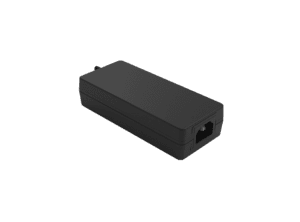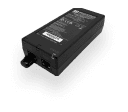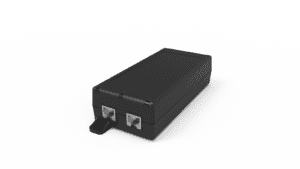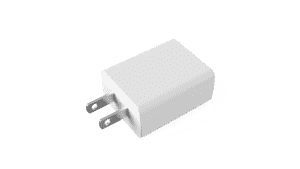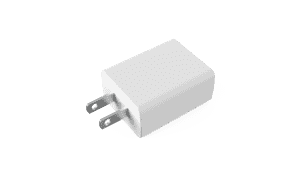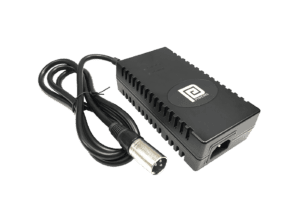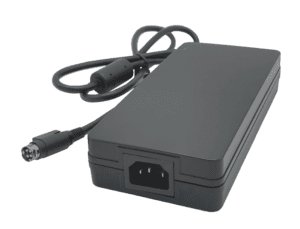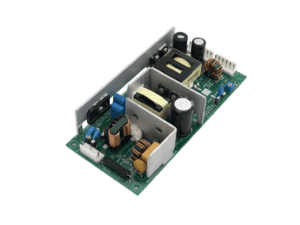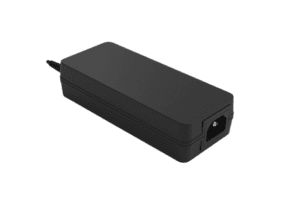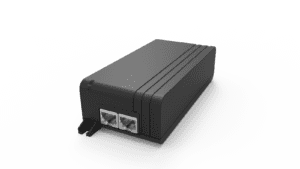BLOG
PoE Switch: Choosing Between Managed vs. Unmanaged for Your Network Needs
Table of contents

Power over Ethernet (PoE) technology has revolutionized network systems by simplifying the power and data connection process for various devices such as IP cameras, wireless access points (WAP), and VoIP phones. At the heart of these networks are network switches (PoE or non-PoE), which provide the necessary power and data connections over a single Ethernet cable. When choosing a switch for your network, you need to make several crucial decisions: whether to opt for a PoE or non-PoE switch, and whether to choose a managed or unmanaged switch. Additionally, for those with existing non-PoE switches, PoE injectors can present a viable alternative. This article will explore all these switch options to help you determine the best choice for your network needs.
Understanding Switches: What is a Switch?
A switch is a hardware device that connects multiple devices within a local area network (LAN). It operates at the data link layer (Layer 2) of the OSI (Open Systems Interconnection) model, making intelligent forwarding decisions based on MAC addresses. Furthermore, it enhances network efficiency by reducing the likelihood of data collisions and optimizing data transfer speeds.
Key Functions of a Switch
Packet Forwarding: A switch receives data packets from devices connected to its ports and forwards them to their intended destination based on Media Access Control (MAC) addresses. This process allows devices within the same network to communicate efficiently.
Address Learning: Switches maintain a table, known as a MAC address table or Content Addressable Memory (CAM) table, which maps MAC addresses to the physical ports on the switch. This table helps the switch determine the path for forwarding packets.
Filtering and Forwarding: Unlike hubs, which broadcast data to all connected devices, switches filter and forward data only to the appropriate destination device. This reduces network congestion and improves overall efficiency.
Collision Domain Segmentation: Switches create individual collision domains for each port, preventing collisions that can occur in shared media environments (like those found in Ethernet hubs).
Types of Switches
Unmanaged Switches
Unmanaged switches are straightforward networking devices that offer essential connectivity without the need for complex configuration. Moreover, these switches are designed to function right out of the box, providing a hassle-free, plug-and-play solution for users. Additionally, they automatically determine the optimal data paths between connected devices, ensuring efficient data transmission without manual intervention. Therefore, this simplicity makes unmanaged switches an excellent choice for small networks, home offices, or any environment where basic network connectivity is sufficient. Their user-friendly nature and reliable performance make them particularly appealing for individuals and organizations seeking a cost-effective solution to their networking needs. Whether you’re setting up a home network, connecting office peripherals, or establishing a basic network in a small business, unmanaged switches deliver the essential connectivity required with minimal effort and expertise.
Unmanaged Switch Advantages:
Ease of Use: Simple plug-and-play setup with no configuration needed (PoE injectors also provide straightforward deployment without the need for network configuration), catering to users looking for simplicity.
Cost-Effective: Generally, more affordable than managed switches (like PoE injectors), making them ideal for small networks, home use, or budget-conscious organizations.
Speed: Like PoE injectors, unmanaged switch installation is easy with no network specialist required, minimizing downtime and getting the network up and running quickly.
Unmanaged Switch Considerations:
Limited Features: Lack of advanced features like VLANs, QoS, and SNMP, which are crucial for managing complex or high-traffic networks.
Scalability: Not ideal for growing networks or environments where network needs may evolve, as they cannot be easily upgraded or reconfigured.
Security: Basic security features may not be sufficient for environments requiring high security, leaving networks more vulnerable to threats.
Control: Limited ability to manage, monitor, or configure network traffic and performance, potentially leading to inefficiencies and bottlenecks in data flow.
Flexibility: Fixed configurations mean they cannot be adapted to specific network requirements, limiting their use in dynamic or custom network setups.
Managed Switches
Unlike their unmanaged counterparts, managed switches offer advanced controls and capabilities. Custom options tailored to the specific requirements of modern networks. These switches provide advanced features such as Virtual LANs (VLANs), which segment network traffic to enhance security and optimize bandwidth allocation. Quality of Service (QoS) settings allow administrators to prioritize critical applications and ensure consistent performance across the network. Additionally, managed switches support advanced management protocols like SNMP (Simple Network Management Protocol), enabling administrators to monitor and manage network devices remotely. This level of flexibility makes managed switches indispensable in environments where network uptime, security, and efficient resource utilization are paramount. Whether deployed in large enterprises, educational institutions, or data centers, managed switches empower IT professionals to optimize network performance and adapt to evolving business needs effectively.
Managed Switch Advantages:
Advanced Features: Support for VLANs, QoS, SNMP, and other advanced protocols enhances network management, security, and performance, allowing for sophisticated network designs.
Scalability: Ideal for growing networks, with features that can adapt to increased complexity and demands, supporting large-scale deployments and future expansion.
Security: Improved security features, such as access control lists (ACLs), port security, and advanced encryption, protect sensitive data and ensure secure network access.
Remote Management: Advanced management protocols like SNMP allow for remote monitoring and management, reducing the need for on-site intervention and enabling quicker response times to network issues.
Redundancy and Failover: Features like link aggregation and failover support provide redundancy, ensuring high availability and minimizing downtime in case of hardware failures.
Managed Switch Considerations:
Cost: Generally, more expensive than unmanaged switches due to advanced features and capabilities, potentially requiring a larger initial investment.
Complexity: Requires more expertise to configure and manage, increasing the need for skilled IT staff and potentially leading to higher training and staffing costs.
Maintenance: Ongoing management and updates are needed to keep the network running efficiently, adding to the operational workload and requiring regular attention.
Setup Time: More time-consuming initial setup compared to plug-and-play unmanaged switches, involving detailed configuration and testing to ensure optimal performance.
Overhead: Advanced features and capabilities can introduce additional administrative overhead, requiring careful planning and management to fully leverage their benefits without overwhelming the IT team.
Understanding PoE: What is Power Over Ethernet?
After choosing between a managed or an unmanaged switch, it’s time to consider if you will be needing Power over Ethernet (PoE) compatibility. Power over Ethernet is an ingenious solution that eliminates the need for separate power cables and delivers both data and power seamlessly through a single Ethernet cable. There are two devices that can give the user this option: PoE Switches or PoE Injectors
PoE Switches
Choosing between a PoE switch and a non-PoE switch is a choice to consider, but it is not an end-all-be-all decision, as a network administrator can always take advantage of PoE injectors to upgrade their existing non-PoE network switch. However, a PoE switch can be a superior choice due to several advantages.
PoE Switch Advantages:
Convenience: A PoE switch streamlines your setup by providing built-in PoE to its ports, acting like a starter package with an allocated power budget. While it allocates power to the ports in instances where the built-in power budget is not sufficient, then supplementing with PoE injectors may be necessary.
Centralized Power Management: With PoE switches, power distribution can be managed centrally, making it easier to monitor and control power delivery to connected devices.
Scalability: If you have a medium to large network, or plan to run multiple PoE devices, a switch may be able to power them all at once, making it easier to add new devices without extensive re-wiring.
PoE Switch Considerations:
Expensive: PoE switches generally have a higher initial cost compared to non-PoE switches, which might be a consideration for budget-constrained projects.
Power Limitations: There are power limitations depending on the PoE standard (IEEE 802.3af, 802.3at, or 802.3bt), which may affect the types of devices that can be powered.
Heat Dissipation: PoE switches can generate more heat due to the power they distribute, requiring proper ventilation and cooling solutions.
Compatibility: Specific ports on a multiport PoE switch are limited to a specific PoE standard (802.3af, 802.3at, 802.3bt), whereas a non-PoE switch can use several different types of PoE injectors with different standards on its ports.
PoE Injectors
PoE injectors provide a convenient solution for adding PoE capability to existing non-PoE network switches. They work by injecting power into the Ethernet cable, enabling the connection of PoE devices without the need for a PoE switch.
PoE Injector Advantages:
Convenience: If you already have a non-PoE switch network in place, a single PoE injector can turn a legacy switch into a PoE compatible switch with ease.
Cost-Effective and Flexible: PoE injectors are very affordable and will bypass the need to replace an entire non-PoE infrastructure.
Ease of Installation: PoE injectors are easy to install and can be quickly integrated into the existing network setup.
Reduced Downtime: Adding PoE injectors typically requires minimal network disruption, allowing for seamless upgrades.
Easy to Replace: Using single PoE injectors could be a superior advantage, if one fails, it can easily be replaced. If a PoE switch fails, it means the entire networks must be replaced. This could be costly and can result in significant downtime for all connected devices. Whereas, if one PoE injector fails, only one PoE-enabled device is down, not multiple devices.
Power Flexibility: It’s possible to have multiple PoE injectors with different standards (802.3af, 802.3at, 802.3bt) connected to a legacy non-PoE switch. This translates into a significant advantage, especially if you plan to upgrade to higher-power PoE-devices in the future. Whereas, with a PoE switch, you are stuck with the one PoE standard allocated to the port.
Click here to see Phihong’s PoE injector products!
PoE Injector Considerations:
Additional Hardware: Although PoE injectors are more affordable compared to PoE switches, it can get expensive if many single port PoE injectors are required.
Power Management: Managing multiple PoE injectors can be less efficient than a centralized PoE switch solution.
Space and Cabling: The use of PoE injectors can result in additional space and cabling requirements, potentially leading to a more cluttered setup.
Click here to see Phihong’s PoE injector products!
CLIENT'S QUOTE
Phihong's Power-Over-Ethernet solutions have transformed our network, boosting efficiency and reducing costs. Their seamless integration has simplified both installation and maintenance.
Explore More with Phihong USA
As we conclude our exploration of PoE technology, it’s clear that this field is experiencing unprecedented growth. For over 50 years, Phihong has been at the forefront of innovation, serving Fortune 500 companies across various industries as a leading power supply manufacturer for OEMs.
Phihong’s leadership, particularly in advanced technologies like Power over Ethernet, extends to active contributions in the development of IEEE PoE standards. This involvement underscores our commitment to innovation and dedication to providing cutting-edge power solutions that will shape the future of technology.
In addition to custom power supply solutions, Phihong offers a diverse range of products, including:
- Power over Ethernet (PoE) Solutions: PoE injectors, splitters, media converters, and more
- AC/DC Adapters and Power Supplies: USB adapters, desktop adapters, industrial-grade power supplies, and more
- Battery Chargers: Chargers for lithium-ion and lead-acid batteries
- Medical Power Supplies: Specialized power supplies that meet stringent healthcare requirements
By partnering with Phihong USA, you are choosing a trailblazer in power technology. If you’re an OEM looking for a custom PoE solution or just looking for a quality product, call us today: 510-445-0100 or email us at usasales@phihongusa.com. We look forward to collaborating with you.

Contact Our Team Today!
Our dedicated sales team and international partners are prepared to support you with your latest projects and initiatives globally.
FAQ
If I already have a non-PoE switch, is it more cost-effective to upgrade to a PoE switch or use PoE injectors instead?
Upgrading to a PoE switch can be more convenient if you need to power multiple PoE devices, as it provides centralized power management and reduces the need for additional hardware. However, this option can be more expensive initially, and there is also the risk of network disruption and downtime during the replacement process, as all connected devices may experience temporary disconnection. PoE injectors are a cost-effective alternative, especially if you have an existing non-PoE infrastructure. They allow you to add PoE capability to individual devices without replacing your entire switch, making them a flexible and affordable solution for smaller or budget-conscious networks. If you anticipate future expansion, the cost of multiple injectors may add up, making a PoE switch more practical in the long run.
How do PoE injectors work, and what are the advantages of using them over PoE switches in a network setup?
PoE injectors work by injecting power into an Ethernet cable, allowing you to power PoE-compatible devices without needing a PoE switch. They are especially useful for adding PoE capability to an existing non-PoE network. The advantages of PoE injectors include their lower cost, ease of installation, and the ability to selectively upgrade only the devices that require PoE. They also provide power flexibility, as you can use multiple injectors with different PoE standards, accommodating a variety of devices. Additionally, if a PoE injector fails, it only affects one device, whereas a PoE switch failure could disrupt the entire network. However, using multiple injectors can lead to a cluttered setup and may require more space and cabling.
What is the difference between a managed and unmanaged switch? (in short)
A managed switch allows for advanced configuration, monitoring, and control of network traffic, making it suitable for complex networks. It supports features like VLANs and QoS, enhancing security and performance. An unmanaged switch, on the other hand, is a plug-and-play device that provides basic connectivity without any configuration options, making it ideal for simple networks or home use.

